INTERMITTENT NO CRANK (REPLACE STARTER ENABLE RELAY)

SUBJECT: INTERMITTENT NO CRANK - REPLACE STARTER ENABLE RELAY
MODEL/YEARS: 1992 EIGHTY EIGHT 1991-92 NINETY EIGHT
An intermittent "no crank" condition may be caused by a malfunctioning starter enable relay. The security light comes on for two seconds (five seconds on Eighty-Eight models) and then goes out, when attempting to start the vehicle. The vehicle, however, does not always enable the starter.
EIGHTY EIGHT
On Eighty Eights built before VIN NH337131 (Flint), and N1806991 (Wentzville), replace the starter enable relay with Part Number 25609047 (refer to the service manual for starter enable relay location) and change the wiring as per the procedure.
On Eighty-Eights built after (and including) VIN NH337131 (Flint), and N1806991 (Wentzville), diagnose "no crank" condition using the service manual diagnostic procedures together with the enclosed updated diagnostic information where applicable.
NINETY EIGHT
On all 1991-92 Ninety Eights built before VIN N4325328, replace the starter enable relay with Part Number 25609047 (refer to the appropriate service manual for starter enable relay location) and change the wiring as per the procedure.
On 1992 Ninety-Eights built after (and including) VIN N4325328, diagnose "no crank" condition using the service manual diagnostic procedures together with the enclosed updated diagnostic information where applicable.
WIRING PROCEDURE:
1. Cut circuit 439 (pnk/blk) wire far enough from the relay connector to allow for splicing. Strip the relay side of the wire for splicing. Tape back the harness side of circuit 439. Refer to Figure 1 for the wiring modification schematic.
2. Cut circuit 5 (yellow wire) far enough from the relay connector to allow for splicing.
3. Splice the three wires (both circuit 5 wires and the circuit 439 wire to the relay) together with a splice clip, part number 1839906, which can be found in terminal repair kit tool J38125-A. Follow the procedure for "splicing copper wire using splice clips" in the service manual, section 8A.
Parts are currently available from GMSPO.
WARRANTY INFORMATION:
Replacing the starter enable relay
Labor Operation No.: R2980 Labor Time: See Current Labor Time Guide
Rewiring the starter enable relay: 0.2 hours (use other hours column)
TROUBLESHOOTING HINTS
o Try the following checks before doing the System Check.
1. Check the key pellet sensing contacts in the Ignition Key Lock Cylinder by looking into the key opening. If the contacts are damaged, or not silver in color, replace the Ignition Key Lock Cylinder (see Section 3F5).
2. Check I/P Fuse Block Fuse 1 (Late Production: vehicles built after [and including] VIN NH337131 and N1806991) and RH Underhood Fuse Block Fuse 4 by visual inspection.
3. Check the ignition key for a cracked resistor pellet or a pellet that is dirty or coated. Also check that the ignition key is free from excess plastic around the resistor pellet contacts.
4. If the PASS-Key II System is intermittent, check that the connector to the PASS-Key II Decoder Module is tight and the terminals are clean.
o Go to System Check for a guide to normal operation.
o Go to System Diagnosis for diagnostic tests.
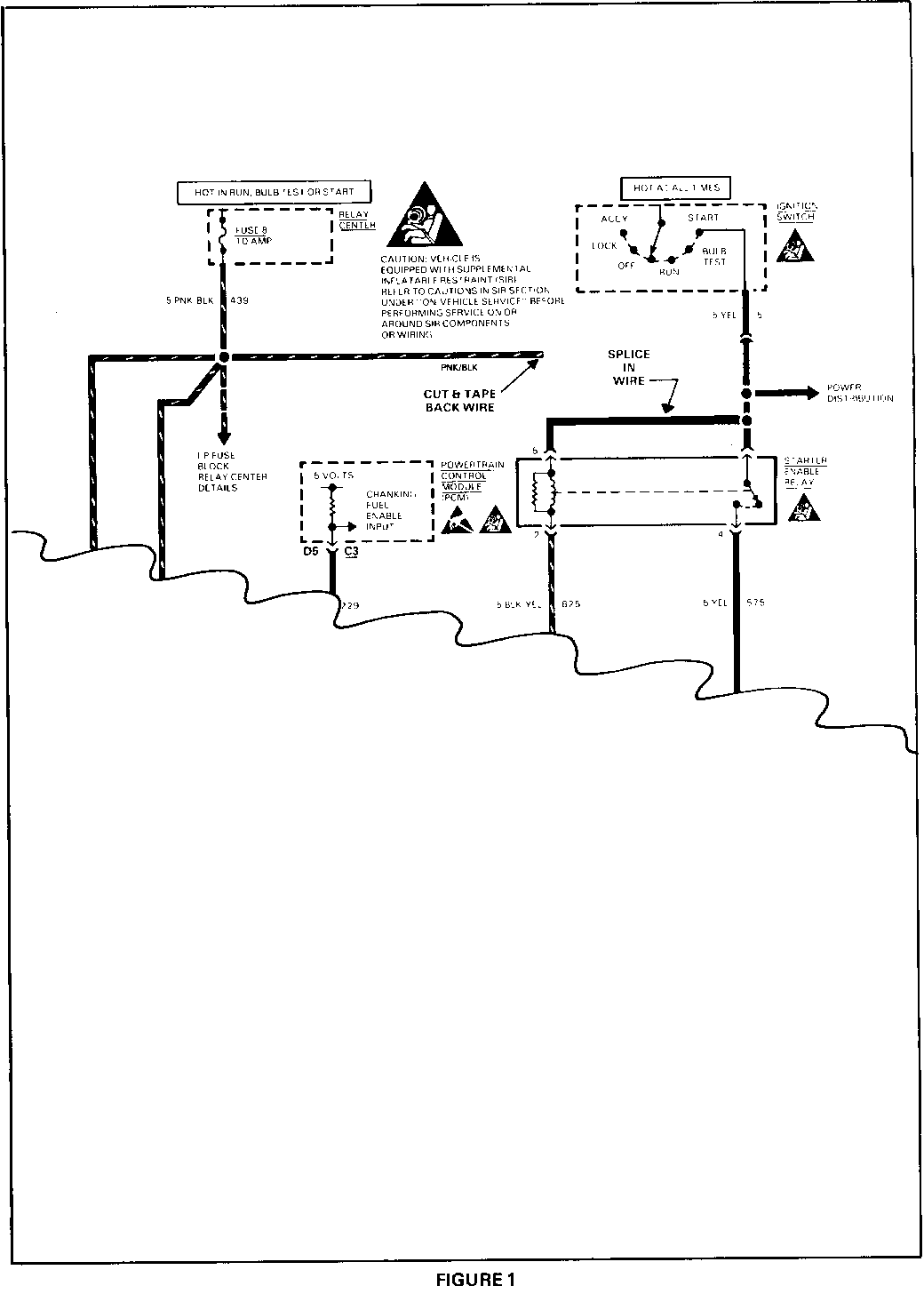
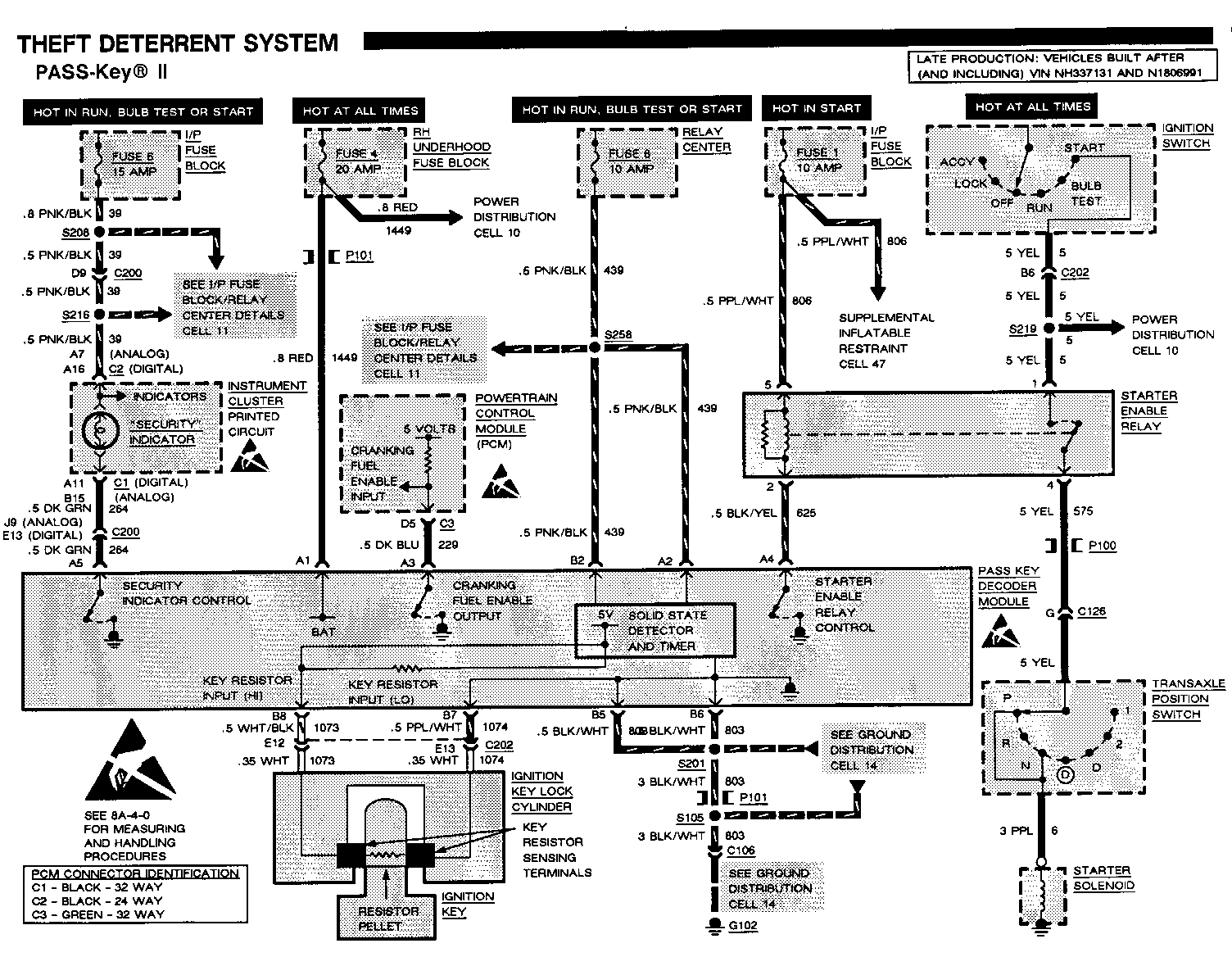
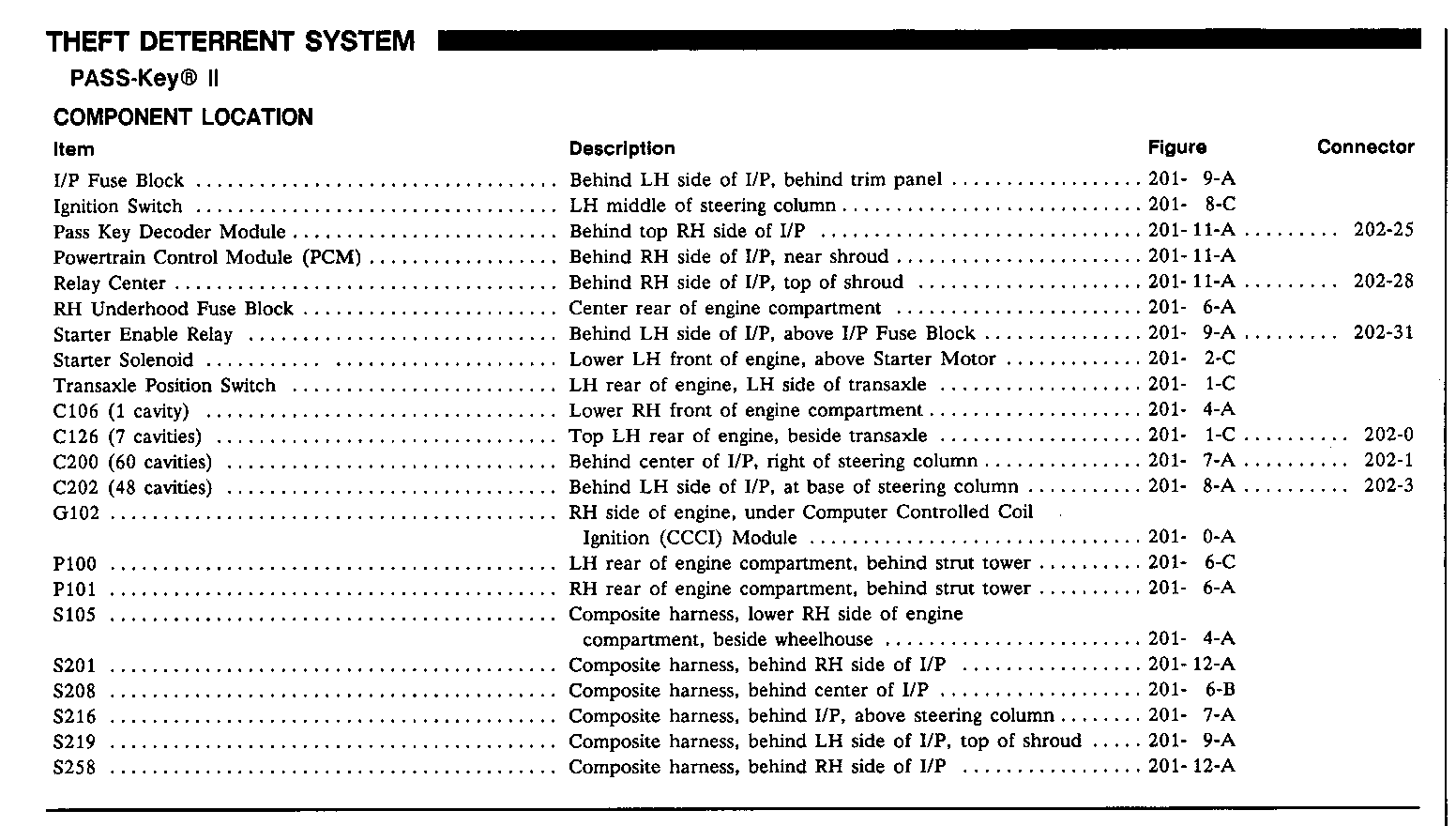
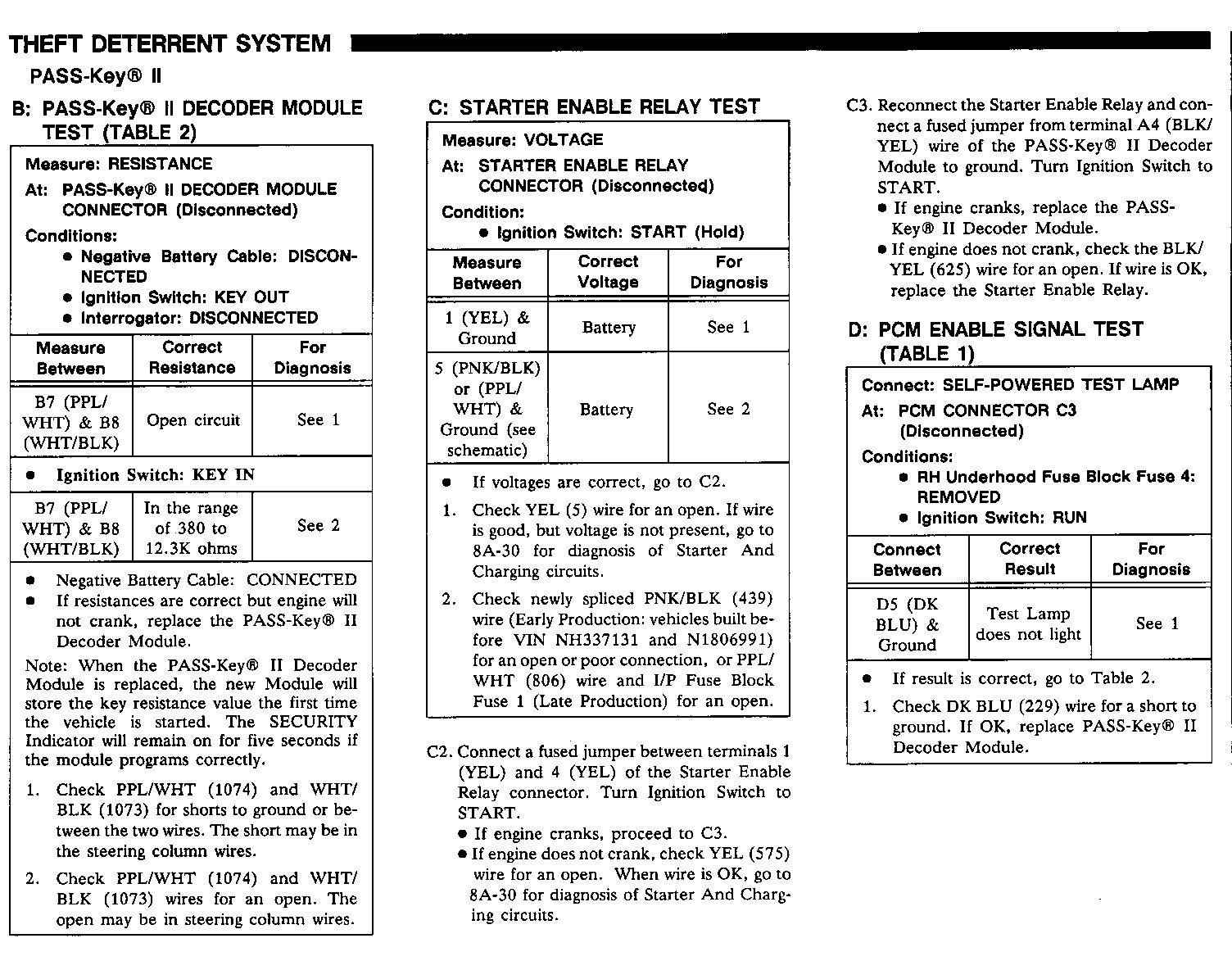
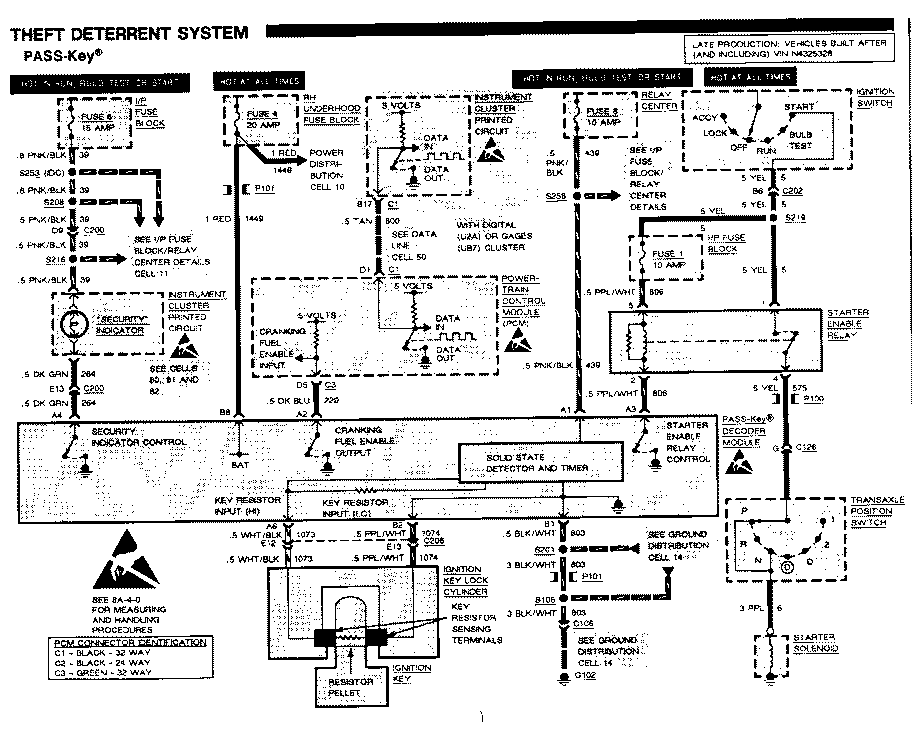
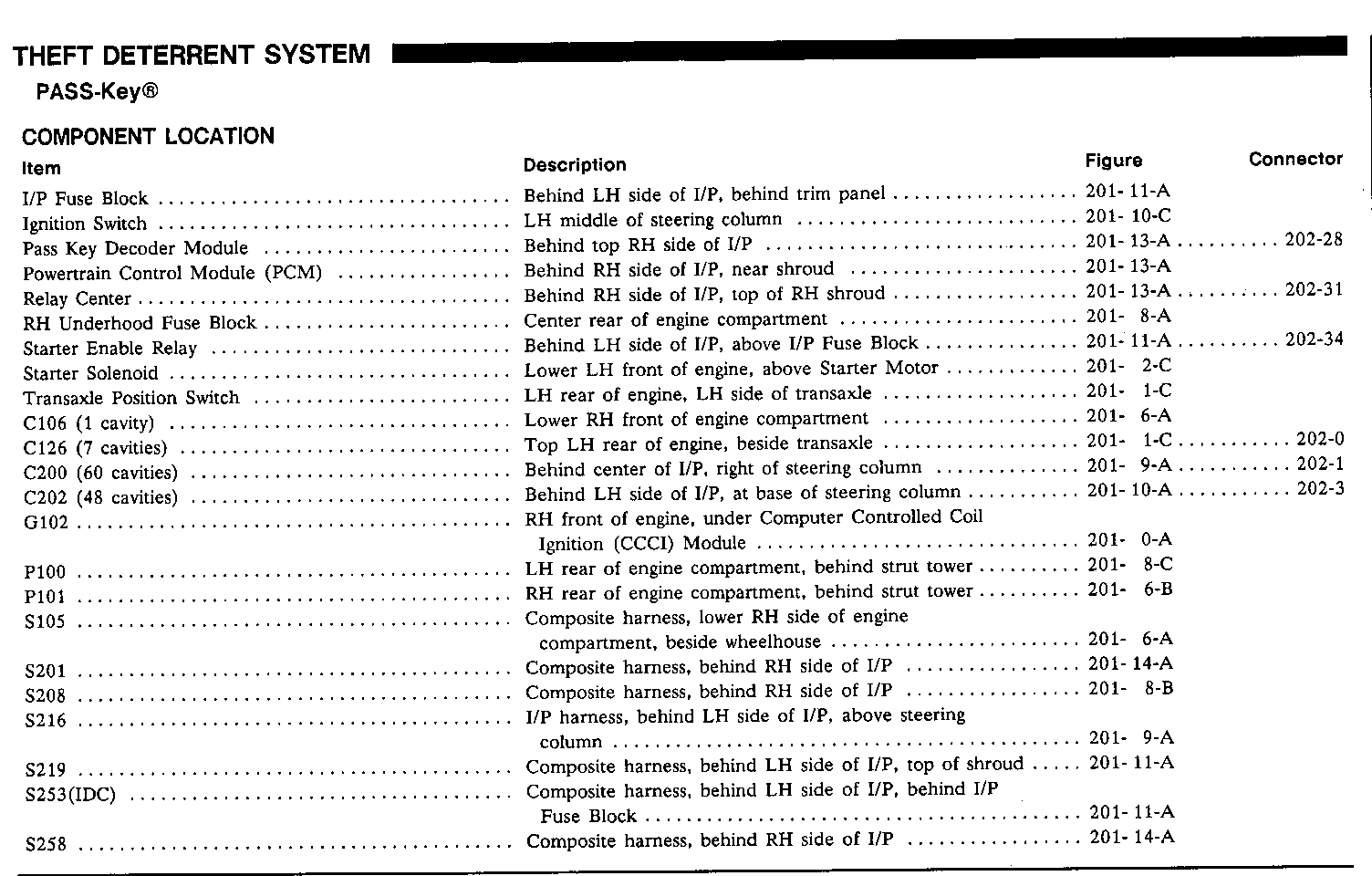
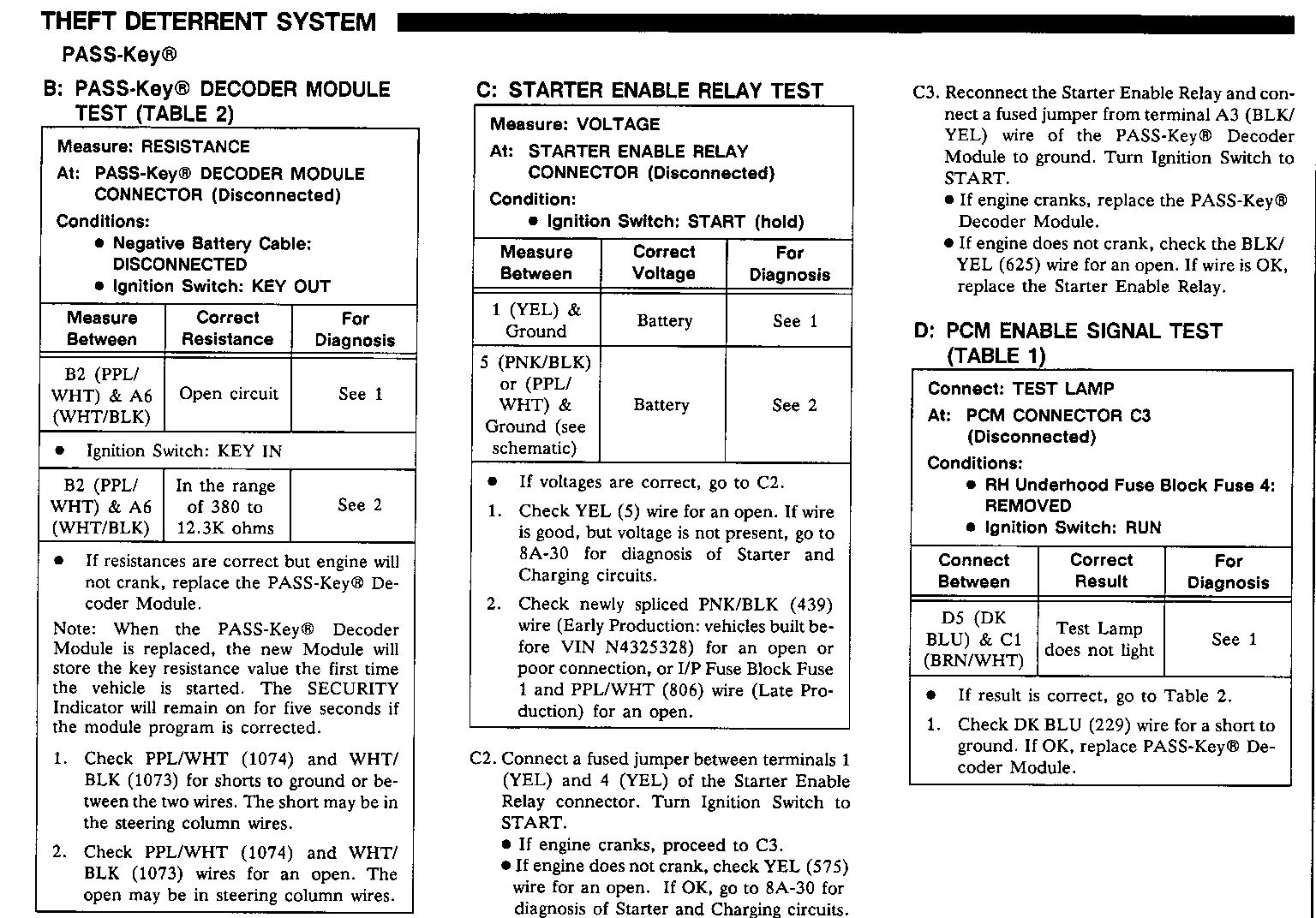
General Motors bulletins are intended for use by professional technicians, not a "do-it-yourselfer". They are written to inform those technicians of conditions that may occur on some vehicles, or to provide information that could assist in the proper service of a vehicle. Properly trained technicians have the equipment, tools, safety instructions and know-how to do a job properly and safely. If a condition is described, do not assume that the bulletin applies to your vehicle, or that your vehicle will have that condition. See a General Motors dealer servicing your brand of General Motors vehicle for information on whether your vehicle may benefit from the information.
